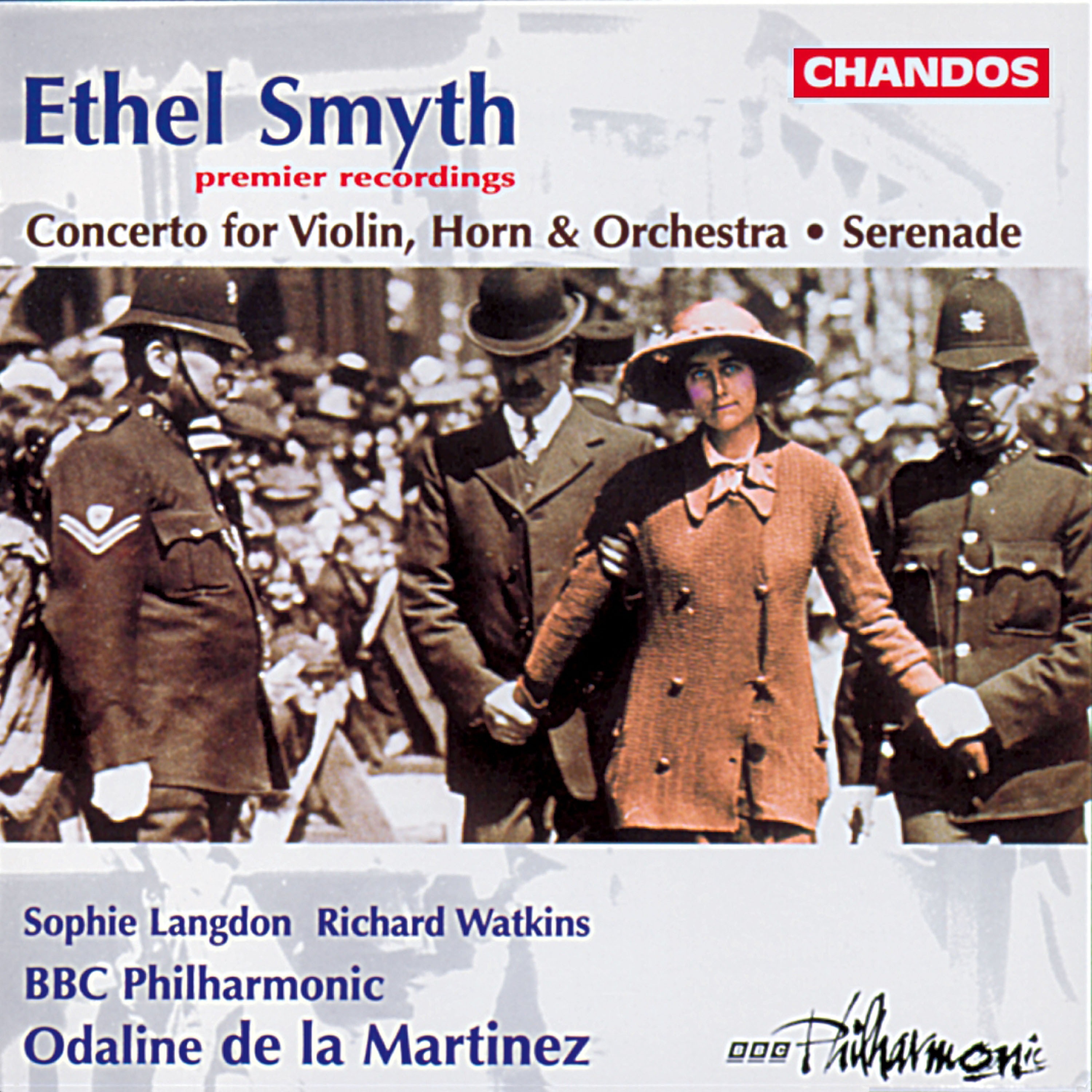Both!
Certainly the cover wants you to know her political history.
What a pair of interesting works this recording offers from turn-of-the-century British composer Ethel Smyth. Sure, they come from opposite ends of Smyth's composing career, but her musical voice is hardly recognizable betwixt the two.
The early Serenade in D Major certainly comes from a Germanic tradition. Roots of Beethoven, Schumann, and Brahms are at the ready throughout its four movements. Only in the fourth-movement finale do I hear a sign of British pomp.
Its opening movement is the closest this work comes to the titular serenade. Oodles of woodwind-infested twitterings and easy-going forest murmurs predominate, occasionally interrupted by orchestral theatrics. The wind pipings continue in the second movement, again with dark-forested reminders of Brahms; only some odd off-beat harmonic movement lets it be known that Smyth is here instead.
If there is a detriment to Smyth's Serenade, it is she doesn't provide much repose for the listener. Even the 'slow' third movement bustles along jauntily, again with those winds piping merrily along. The finale is a door-buster, if there ever was one, although a glowering seriousness pervades its orchestral paths.
If Ethel Smyth's Serenade in D occupies the traditional Brahms-ian landscape, it is the capriciousness and invention of Carl Nielsen I hear in her Double Concerto for violin and horn. Amateur listeners label this work as strange and unusual in comparison to the former pairing, but I find this concerto a delight, providing this listener much amusement.
The tunefulness of the opening movement is enchanting. In this portion of the concerto, the violin and horn often overlap with differing ideas and textures, providing a musical counterpoint for the soloists. The harmonic makeup is also decidedly more modern, yet in a remarkably affable way all the same. This is a curious, but satisfying start for the Smyth concerto.
The middle movement is lyrically beautiful, the first of such we are given from the composer on this program. Beginning with violin and horn without orchestra is a nice touch too. The concluding movement begins on an edgy note, and there is a portion with pounding timpani which reminds me of an exotic-sounding Biblical Epic every time it appears. Otherwise, this movement features a prolonged cadenza for both soloists, an unusual and virtuosic venture, alongside a wild mixture of grandiose final statements.
Too bad the liner notes don't mention anything as to the occasion of the creation of this Double Concerto, for the combination of violin and horn seems an odd choice. Certainly from a recording standpoint, with the violin miked upfront, but the horn's bell naturally facing away, the pairing makes for a difficult situation aurally. Chandos seems to handle it all in stride, even with their slightly distant orchestral soundscape.
I am unfamiliar with both soloists, although each sound like they are having fun with Smyth's music. British conductor Odaline de la Martinez lives for this kind of program, so no doubt this recording remains a top pick under her leadership with the BBC Philharmonic.
Listen on YouTube
Works
Serenade in D Major (35.28)
Double Concerto for Violin & Horn (28.06)
Performers
BBC Philharmonic Orchestra
Odaline de la Martinez, conductor
Label: Chandos
Year: 1996
Total Timing: 63.46
I really took to these two orchestral works, despite their remarkable differences.
I am glad, for the first work I heard from Ethel Smyth didn't leave me with a whole lot of confidence.
I think I like Smyth's bold colors in this music best of all, with a mix of Brahms and Nielsen to my ears.
Find more Smyth recordings HERE!



No comments:
Post a Comment